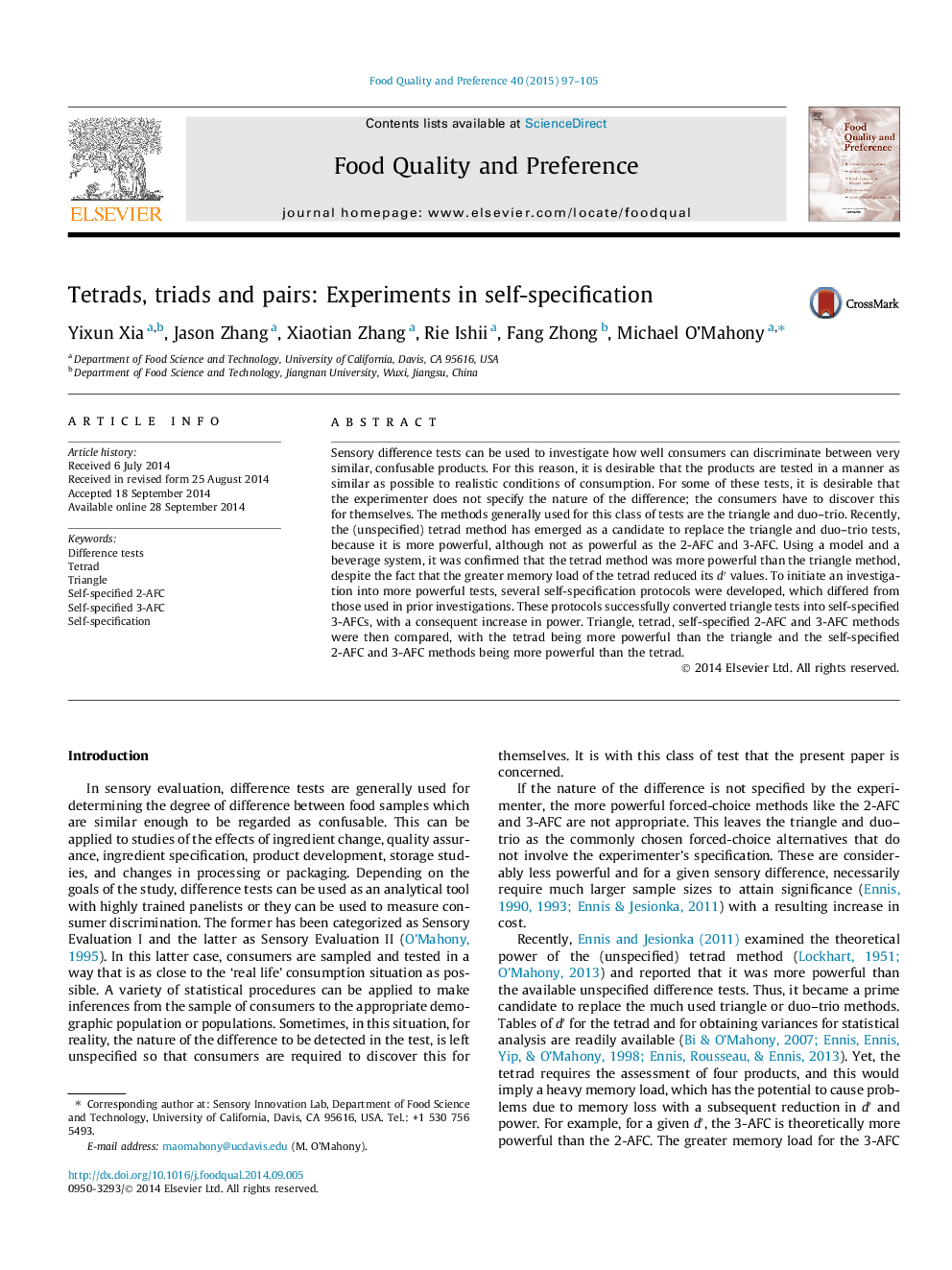| کد مقاله | کد نشریه | سال انتشار | مقاله انگلیسی | نسخه تمام متن |
|---|---|---|---|---|
| 4317067 | 1290576 | 2015 | 9 صفحه PDF | دانلود رایگان |

• Confirmation that the tetrad method is more powerful than the triangle.
• 3-AFC and 2-AFC tests can be used with self-specification by consumers.
• Self-specified 2-AFC and 3-AFC are more powerful than the tetrad and triangle.
Sensory difference tests can be used to investigate how well consumers can discriminate between very similar, confusable products. For this reason, it is desirable that the products are tested in a manner as similar as possible to realistic conditions of consumption. For some of these tests, it is desirable that the experimenter does not specify the nature of the difference; the consumers have to discover this for themselves. The methods generally used for this class of tests are the triangle and duo–trio. Recently, the (unspecified) tetrad method has emerged as a candidate to replace the triangle and duo–trio tests, because it is more powerful, although not as powerful as the 2-AFC and 3-AFC. Using a model and a beverage system, it was confirmed that the tetrad method was more powerful than the triangle method, despite the fact that the greater memory load of the tetrad reduced its d′ values. To initiate an investigation into more powerful tests, several self-specification protocols were developed, which differed from those used in prior investigations. These protocols successfully converted triangle tests into self-specified 3-AFCs, with a consequent increase in power. Triangle, tetrad, self-specified 2-AFC and 3-AFC methods were then compared, with the tetrad being more powerful than the triangle and the self-specified 2-AFC and 3-AFC methods being more powerful than the tetrad.
Journal: Food Quality and Preference - Volume 40, Part A, March 2015, Pages 97–105